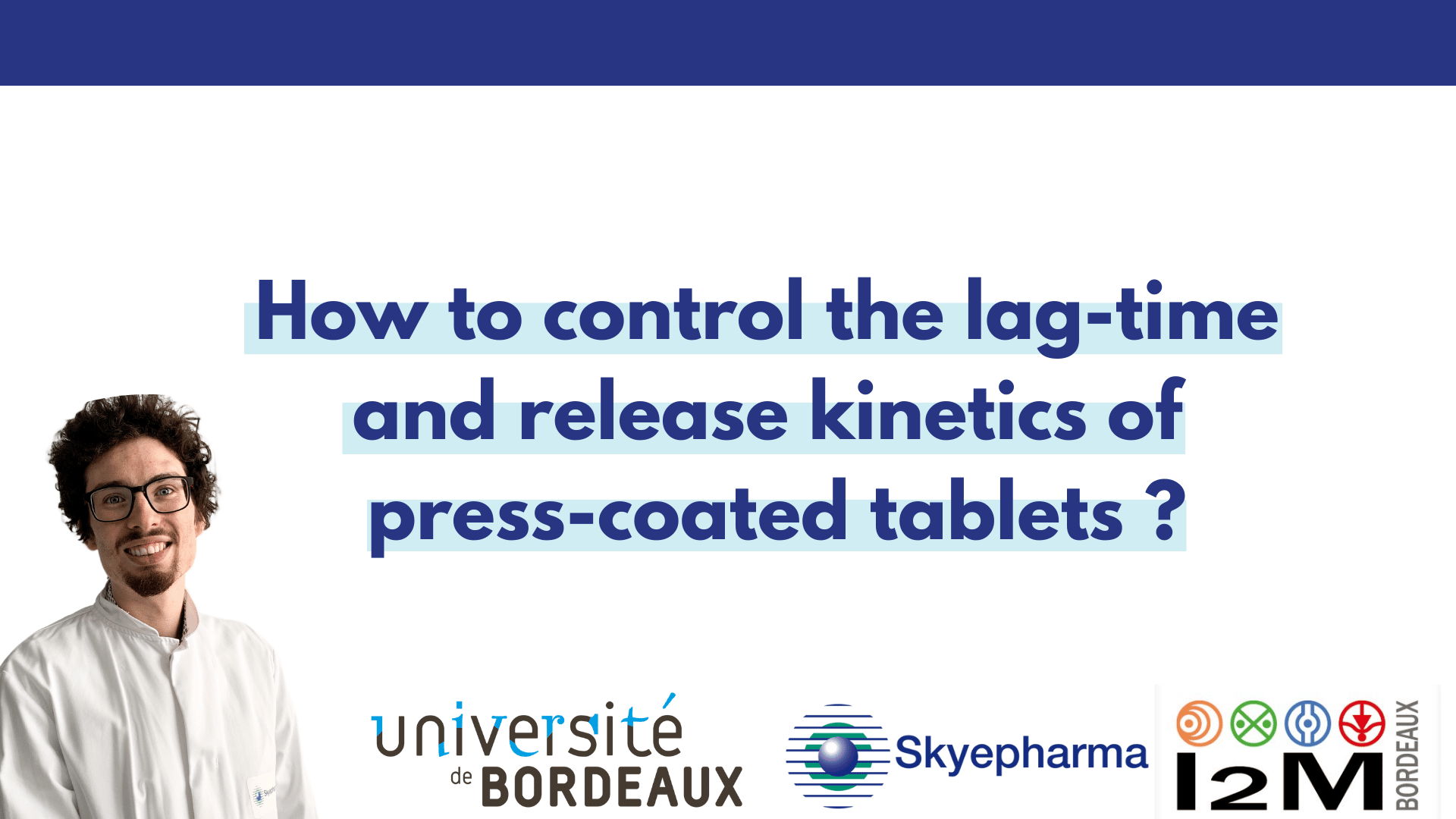Press-coated tablets are an advantageous technology to achieve delayed releases of active ingredients. They are characterized by a core–shell structure, that makes it possible to tune the lag-time and release kinetics in order to meet the chronotherapeutical goals.
Thus, these features are the most important quality attributes to be controlled when designing a press-coated tablet. Many studies have focused on the influence of the formulation on the release attributes.
This work aims to study the influence of geometrical and process parameters on the release attributes of press-coated tablets, while keeping a constant formulation. In particular, the variation of compression pressure, layer thickness and band thickness made it possible to vary the lag-time from 1 h to 10 h. These parameters also have an influence on the release kinetics after the lag-time. Indeed, two main opening modes were observed during the dissolution test that correspond to fast or slow release rates. The opening mode obtained depends on the density distribution in the shell, which is directly influenced by the process parameters.



